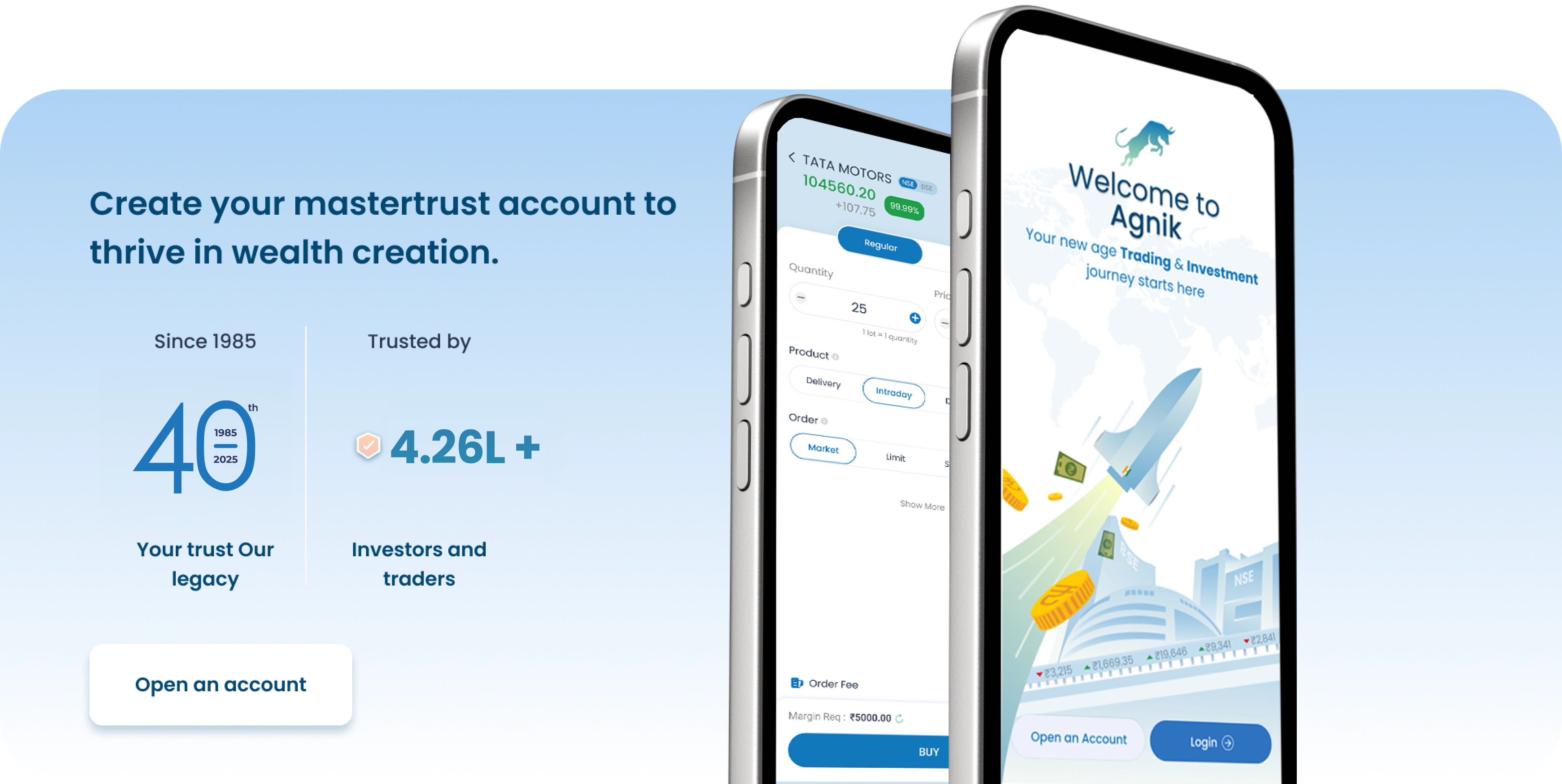The Importance of Backtesting Trading Strategies
Noor Kaur
23 Jan 2025Tags:
Featured
Ever wondered if your trading strategy really works before risking real money? Backtesting gives you the answer. By simulating trades on past market data, you can predict performance, reduce risk, and trade smarter.
Backtesting is one of the most important steps in refining your trading strategy. Using historical market data, you can test how your backtest trading strategy would have performed in the past, helping you make more informed decisions moving forward. Keep reading to know more!
Introduction to the Backtesting Trading
Backtesting trading is a method where you test your backtest trading strategy using historical data to see how it would have performed in the past. This helps you understand the effectiveness of your approach before using it with real money. By backtesting, you can gain confidence in your strategy and identify areas for improvement.
Suggested Read:
Importance of Data Quality in Algo Backtesting
Importance of Backtesting
Backtesting is a crucial step in refining your trading strategy. It helps you understand whether your backtest trading strategy would have worked in the past under real market conditions. Without this process, you risk making decisions based on guesswork rather than solid data.
Here’s why backtesting is so important:
- Risk Assessment: By simulating trades with historical data, you can identify potential risks and understand how your strategy might perform under different market conditions.
- Strategy Validation: Backtesting helps confirm whether your trading strategy will be profitable. It may be effective in future trading if it shows positive results in past data,
- Performance Metrics: It provides valuable statistics, such as net profit, volatility measures, and win-to-loss ratios, essential for evaluating and refining one's trading approach.
- Confidence Building: Testing your strategy on historical data builds confidence, allowing you to make more informed decisions when trading with real money.
Latest Tools for Backtesting in 2025
As technology evolves, traders now have access to more advanced and user-friendly backtesting platforms. In 2025, several tools stand out for their speed, accuracy, and customization:
TradingView Strategy Tester – Offers intuitive chart-based strategy testing for beginners and pros alike.
QuantConnect – A powerful cloud-based platform supporting C#, Python, and algorithmic trading with institutional-grade data.
MetaTrader 5 (MT5) – Still one of the most widely used platforms for forex and stock strategy backtesting with real-time simulation.
Amibroker – Known for its speed and flexibility, ideal for custom scripting and in-depth analysis.
These tools make it easier to backtest strategies without writing complex code or spending hours on manual data analysis. Whether you're a discretionary trader or building automated systems, it's worth exploring the latest backtesting tools to refine your edge.
Key Components of Backtesting
Backtesting is an essential part of developing a trading strategy. It allows you to assess how your strategy would have performed in the past. To get meaningful results, it is important to understand the key components involved in backtesting. Here's a breakdown of what you need to consider:
- Historical Data: Backtesting relies on past market data. This includes prices, trading volumes, and other relevant factors influencing trades. The quality and accuracy of historical data can impact the reliability of your results.
- Trading Rules: When conducting strategy backtesting, you define specific rules for buying and selling. These rules can be based on technical indicators, price patterns, or other criteria.
- Trade Execution: Backtest trading involves simulating the execution of trades based on your defined rules, including entry points, exit points, stop-loss orders, and take-profit levels.
- Performance Metrics: After completing the backtest, you must analyse the results. Key metrics like profit, risk, drawdowns (how much the strategy loses from its peak), and win-to-loss ratios give insights into how well the strategy would have performed.
- Transaction Costs: It is crucial for accuracy to include commission fees and slippage (the difference between expected and actual prices when executing a trade) during backtest trading. The backtest results might not reflect real trading conditions without considering these factors.
Steps to Conduct Backtesting
Here are some steps that will help you ensure that your strategy is well-tested and ready for real market conditions:
- Define Your Strategy: Start by outlining your backtest trading strategy. Set clear rules for when to buy and sell and for applying risk management techniques (such as stop-loss orders).
- Gather Historical Data: Backtesting relies heavily on past market data. To apply your strategy, collect accurate historical data (such as stock prices, trading volumes, etc.) and ensure that it spans a sufficient time period for reliable testing.
- Select a Backtesting Tool: Choose a backtesting tool or platform to test your strategy on historical data. Some backtesting trading strategies websites provide built-in tools that help automate this process.
- Run the Backtest: Apply your strategy to the historical data. Execute the trades based on your defined rules and see how the strategy performed during that time.
- Analyse Performance: Once the backtest is complete, analyse key metrics like profit, loss, win ratio, and drawdowns (the loss from the highest to the lowest point of the strategy). This will help you determine if the strategy is viable or needs adjustments.
Common Pitfalls in Backtesting
While backtesting can be a valuable tool for assessing a trading strategy, traders make several common mistakes. These include:
- Overfitting the Strategy: A backtest trading strategy that is too specific to past data can result in overfitting. While the strategy works well with historical data, it may not perform well in real market conditions.
- Ignoring Transaction Costs: Many traders overlook transaction costs such as commissions and slippage (the difference between the expected and actual prices). Not accounting for these costs can lead to unrealistic backtest results.
- Using Inaccurate Data: Poor-quality or incomplete historical data can lead to misleading backtest results. So, make sure to use accurate data from a reliable source.
- Assuming Past Performance Predicts Future Results: While backtesting helps you understand how a strategy would have performed in the past, it doesn't guarantee future success.
Best Practices for Effective Backtesting
To make your backtesting more effective, it's important to follow a set of best practices such as:
- Test on Multiple Market Conditions: Your backtest trading strategy should be tested across different market conditions, such as bull, bear, and sideways markets. This will give you a complete understanding of how the strategy might perform in various situations.
- Include Transaction Costs: Always factor in transaction costs, such as broker commissions and slippage (the difference between expected and actual price). Ignoring these can result in overly optimistic backtest results. A solid strategy backtesting approach will include these costs to reflect more realistic outcomes.
- Use Reliable Data: High-quality historical data is crucial for backtesting trading strategies. Accurate or outdated data can lead to misleading results. Always get your data from a trustworthy source or website for backtesting trading strategies.
- Stick to a Consistent Testing Setup: Using the same setup across tests to compare different strategies or parameters. Changes in testing conditions can skew the results, making them unreliable.
Conclusion
Incorporating backtesting into your trading routine can save you from costly mistakes and guide you toward better trading decisions. Whether you're a beginner or an experienced trader, backtest trading allows you to assess the reliability of your strategy in a risk-free environment. Also, make it a part of your process and let it help you build a more informed and structured approach to trading.
FAQs
What is backtesting in trading?
Backtesting evaluates a trading strategy using historical market data to determine its potential profitability. It helps traders assess how their strategy would have performed in the past before applying it to live markets.
Why is backtesting important for traders?
Some reasons why backtesting is important are:
- Validates strategies: By conducting a backtest trading strategy, traders can ensure their approach aligns with market trends.
- Minimises risk: Testing on historical data reduces the chances of errors in live trading.
- Optimises performance: Strategy backtesting helps refine and improve trading methods.
How do you conduct backtesting for a trading strategy?
To conduct backtesting for a trading strategy:
- Define your backtest trading parameters, such as entry/exit points, stop-loss, and take-profit levels.
- Use historical data to simulate trades based on these rules.
- Analyse the outcomes to determine profitability, risk, and consistency.
- Adjust and repeat to optimise the backtest stock strategy for better performance.
What tools can be used for backtesting trading strategies?
Some tools that you can use for backtesting trading strategies are:
- Backtesting tools: Platforms like TradingView and MetaTrader offer robust features for strategy testing.
- Trading tools for beginners: Basic platforms help newcomers test simple strategies.
- Advanced trading platforms by Mastertrust: Designed for experienced traders to conduct comprehensive backtesting trading strategies.
- Specialised backtesting trading strategies websites for enhanced functionality.
Noor Kaur
23 Jan 2025Related blogs


Analysing Open Interest Data: Tools and Techniques for Traders
Analysing Open Interest Data:Tools & Techniques for Traders


10 Answers to the Most Common Questions About Money
10 Answers to the Most Common Questions About Money


The Importance of ‘Skin in the Game’ for Promoters in Listed Companies
Explore the importance of 'skin in the game' for promoters in listed companies, its impact on investor confidence, company performance, and corporate governance.


Why Equity Is Treated Differently Than Real Estate or Gold—and What That Means for You
Understand the distinctions between equity, real estate, and gold investments. Learn how each asset class responds to market dynamics and aligns with your financial goals.
Sign up to our newsletter !
Share this article on
Recent articles
Tags:
Open a Demat Account in just 15 minutes !

Click on open
account below

Fill out some
basic details

Upload your
documents

Start trading in
24 Hours *
Commonly asked questions
Is Master Capital Services Limited SEBI registered?
Do you have a mobile app for Trading and Finance Management?
What services does mastertrust provide?
What is the minimum investment required to start trading with your company?
Is my personal and financial information secure with your company?
What is your customer support availability?





